Wednesday, 30 September 2015
Monday, 21 September 2015
College/analysis
As you can see from my Mood board, I have mostly chosen to
take pictures which are horror, action, psychological and some romance genres as
I have some ideas of making my final piece horror and psychological sub-genre
mixed. This is because I believe that horror and psychological sub-genres are
most suited for a thriller genre. From
these pictures I can tell how the lighting and the settings are the most
important factor in a horror or psychological movies as a result of making the
scenes have more suspense and eerie. In the future, if I am to carry on with
this decision to having horror and psychological sub-genres then I would have
to keep in mind for the lighting and setting to make the scenes more effective.
Thursday, 17 September 2015
Recreating shots/ Evaluation
Recreating Shots
We were set a task, which was to re-create the following images that was given to us. When looking at the
images, the photographer had used a variety of shots to capture the images: CU, Low
angle, High angle, Bird eye view and many more to make the image look more interesting
and unique. These images are taken from movies; to give us some kind of idea as
to what kind of shots we can use for our preliminary task. By doing this task,
I was able to understand how certain shot is able to successfully portray/reflect on the character's emotions. Not only that, by re-creating these images we are
able to get used to taking pictures using these techniques and have a clear
idea about how they actually look, when taken by ourselves. Also, this gave me
some idea of which shots I will be using for my preliminary task as well as for
my final piece.
High angle shot without having much problem. However, one thing that does concern me is that at the background there were supposed to be more people and their shadows. This made the image look average as it didn’t have any shadows, which would have made the image look more eerie and have more emotion.
In this image Low angle is used, this angle is mostly used to
show how much authority the character possesses. This picture is captured
exactly the same as the professional image that was given to us. By looking at
this picture, it makes us feel how the character obtains some kind of power.
However, when taking this picture I could have zoomed in a bit so that, which
will make sure that the character is receiving all the attention instead of the
background in this case the trees.
This shot is called ‘Medium shot/Two shots’, where both characters
are included in the scene together. In this scene the two characters will
normally be having some kind of conversation. This shot has been taken properly
as it looks professional also, looks similar to the original image. Despite
this, I should have zoomed in more to make the background look less focused, so
that the characters would be focused more.
This shot is also taken using a Low angle, to make the
audience feel as if the character is in charge of the power. If I’m to use this
shot in my preliminary task, then I’ll probably have to think about the
lighting and shoot it a bit lower than this one, So that the scene can produce
some eerie atmosphere. Overall, I’m quite happy with this image as well because
it was our first attempt in taking pictures using this kind of angle.
This image is taken well by using a CU shot as the
background doesn’t hinder the focus from the main character. This image also
looks similar to the original picture that was given to us.
In the last picture LS is used to take this
image. The last picture is the best one out of all the other pictures we have
taken. This is because the character is in the middle of the image, making her be
the main focus. LS is mostly used to show the audience the view of the setting
and in this image the background is seen clearly.
Camera Angles
Camera Angle
When it comes to different types of ‘Camera Angles’, they
have a Varity of angles which are used in movies and dramas. The most popular
angles that are used a lot of times while making movies/dramas are:
Close up (CU):
LS is normally used to give more priority to the setting more
the character itself. In this example you can see how the LS signifies they are
going through a very beautiful; almost magical place but at the same time
dangerous.
In this shot the two characters who are present in the scene,
constantly stay at the center of the scene. This shot is mostly used when the
two character are interacting with each other.
Ariel View:
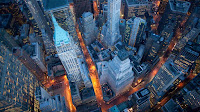
This shot is used a lot at the beginning of a
movie, mostly used to introduce the producers and other workers behind/in front
of the camera. Not only that, it is used at a chase scenes to give it some more
excitement.
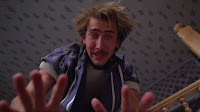
Point of
View:
As the title ‘Point of View’ tells us, it
means to see form a characters eyes. Mostly shown to make the audience feel how
they are seeing and somethings what they are feeling.
Over the Shoulder:
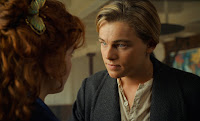 In this shot, the scene is shot from behind a person’s
shoulder; so that you can see the other character they are interacting to. It
is almost like a point of view shot but, it’s over the shoulder.
In this shot, the scene is shot from behind a person’s
shoulder; so that you can see the other character they are interacting to. It
is almost like a point of view shot but, it’s over the shoulder.
Bird eye
view:
This shot
is normally used for a lot of documentaries to give the place/things some
dramatic effect. It is also used in some movies and dramas to focus on the
character more.
High Angle:
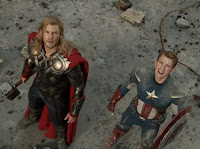 This angle is taken from above, it is very powerful when it
comes to show which character is powerful or which character is more compliant
then another.
This angle is taken from above, it is very powerful when it
comes to show which character is powerful or which character is more compliant
then another.
Low angle:
Extreme close up:
 Extreme close up is used a lot to focus on certain
structure/part of the subject. It is mostly used to focus in the eye to show
strong emotions of what the character is feeling.
Extreme close up is used a lot to focus on certain
structure/part of the subject. It is mostly used to focus in the eye to show
strong emotions of what the character is feeling.
Angling is
important as it makes the scene most interesting and lively. In addition, it
also emphasizes the key point of the character such as showing their statues or
showing the setting.
180 degree rule
180 degree rule
The 180 degree rule is normally referred to a scene, which is
a shot of only one side that always follows an invisible arc line. In a 180
degree shot you will need two characters, which would be facing each other; it
gives the cameraman an invisible line as to where he/she can or can’t cross while
shooting the video. This rule is mostly used during chase scene, fight scene or
during an intense conversation. By using this technique the scene will be able
to portray some dramatic atmosphere, making the audience feel thrilled especially
in a chase scene.
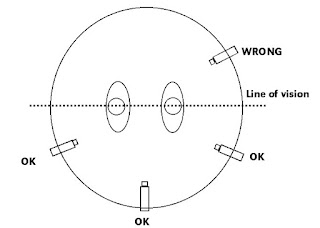 In this picture, it elaborates how a 180 degree shot looks
like. It shows us how you can only shoot from one side of the circle and if you
cross to the other side; you will be breaking the 180 degree rule. If 180
degree rule is broken, then it can leave the audience feeling confused.
In this picture, it elaborates how a 180 degree shot looks
like. It shows us how you can only shoot from one side of the circle and if you
cross to the other side; you will be breaking the 180 degree rule. If 180
degree rule is broken, then it can leave the audience feeling confused. Transitions
Transitions
Rhythmic editing:
In
this editing each shots goes on for the same amount of time. Rhythmic editing
is mostly used in music videos. The length of each scene depends on how fast or
slow the song is for example if a song has a really fast pace than the scenes
will most likely to be short and switch quickly to the next scenes. The effects of Rhythmic editing is that it makes the video and the music one which makes it even exciting to watch. This way they audience will fell both astounded and entertaining to listen and watch the video, depending on the so
Wipe:
Wipe is when a shot is substituted by another shot. This technique used to be popular in the olden days. However, now days people don’t really use Wipe anymore as it doesn't look professional when it transits from one shot to another.
Montage:
This is when you put together pictures with juxtaposition or superimposition that all are related to different theme than each other. Montage is also used in the olden days but is also used in today's days to put together pictures. It is normally to show the past of ones life. https://www.youtube.com/watch?v=CNYBXKt6_dw
Eye Line Match:
This technique has more than two shots where the character will be looking at the object/person and the next shot is shown from the other person's or the object's perspective as they are facing the first character. This is mostly used in the film/drama industry when one of the character is not presence, this is when they can use Eye line Match to have a conversation with another character without them having to be there.This shot is used to see the characters facial expression from the other character's point of view.https://www.youtube.com/watch?v=kUR3jCeGCm4
Cross Cutting:
Cross Cutting is when two different shots are being shows while its happening at the same time. In this example you can see that two things are edited together to show how they are happening at the same time. This is mostly used in action parts to make the audience feel more anxious and stopping them from getting bored as they keep on watching it.
Graphic Matching:
Graphic matching is used to smoothly transfer from one shot to another which links to the subject altogether. In this example you can see a man riding on a horse, which smoothly changes into another character who is also riding a horse with similar background.
A Long Take:
This is when there are no cuts in the scene or two or more scene are edited together. A Long Shots are continuous. As you can see in my example Tarkovsky has used three long shots, the best shot is the third one which was around 1 minute and 27 seconds. When doing a long take you have to show some of the setting as well to show what kind of situation the subjects are living in or going through.
Shot reverse shot:
This is when a character is look off screen, to the second character and the next shot is when the 'off screen' character is looking back at the previous character.This shot is used a lot in Hollywood movies or dramas when the two character is having a conversation. It also shows the facial expression of the characters.
Continuity Editing:
This editing style is the most dominating style used to edit movies and dramas. This makes the scenes run smoothly even with shots from two different scene.
Saturday, 12 September 2015
Brief
 Media Usage:
Media Usage:
Internet/App:
Instagram Web Page Skype Facebook
Magazines Vines YouTube Dubsmash
Email such as: Hotmail Yahoo and many more
Twitter
TV:
News (BBC News, CNN) Cartoons Movies
TV Series channels(NBC, Disney, BBC, cartoon network) Documentaries
Others:
Netflix Radio (Kiss, Capital) Games Newspaper (Metro, The Independent, The Sun)
Leaflet Print Cinema


Most of these media usage are used for entertainment, for
example Vines, YouTube, Dubsmash, Instagram post videos or pictures, which are
target towards specific audience (age group/gender). On top of that, it is also
for personal uses, for instance social media: Facebook, Twitter, Instagram.
They are used to connect with friends or relatives, follow people’s idols and
being aware of what is going on around the world.
Subscribe to:
Comments (Atom)











